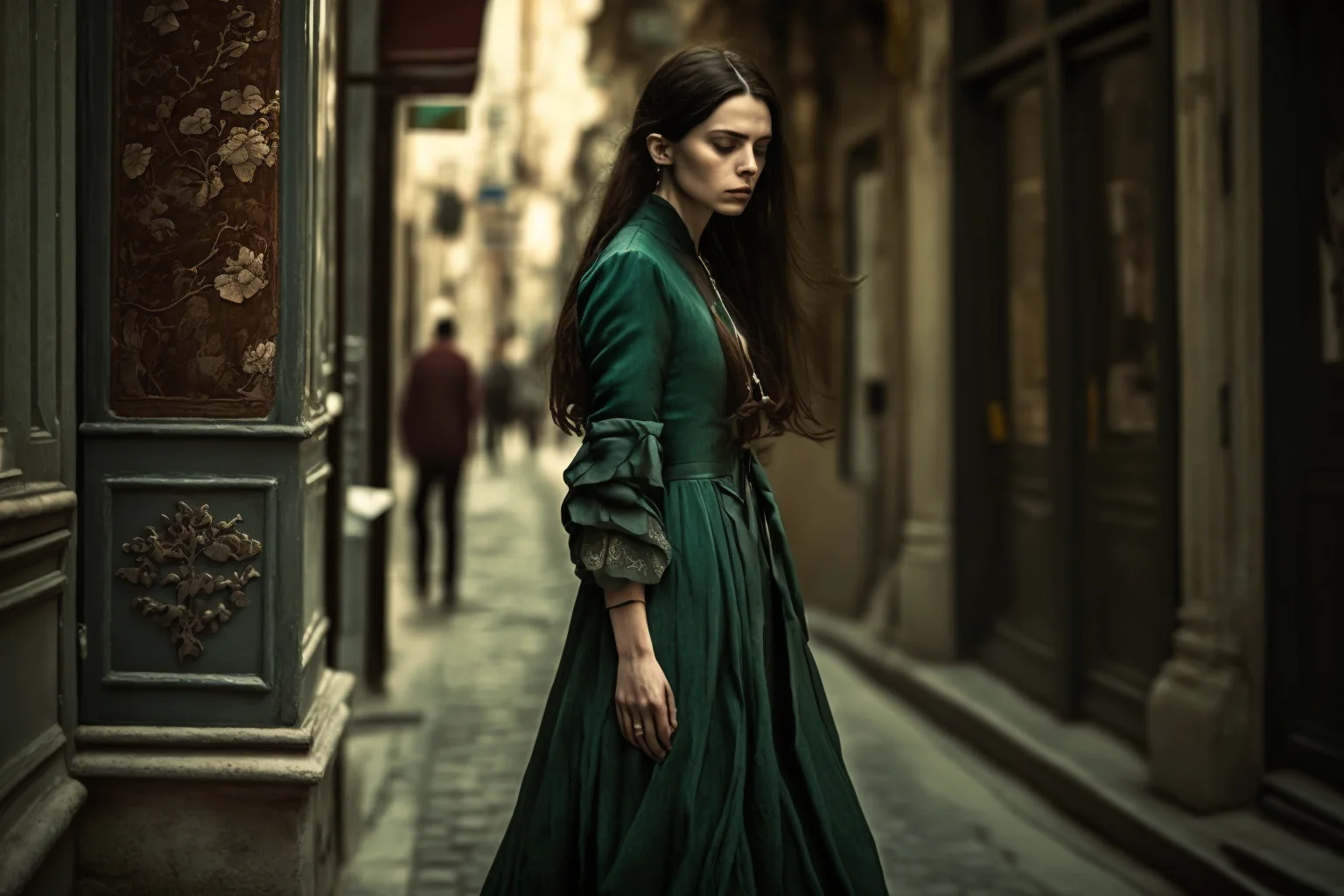Has Religious Modesty Culture Affected Fashion?

Religious modesty culture has been an integral part of many faiths and cultures around the world for centuries. It is a way of life that emphasizes dressing in modest attire to express one’s beliefs and respect towards religious customs, while also helping followers stay focused on their spiritual goals.
Modest fashion typically involves clothing items such as long-sleeved tops, blouses with collars or necklines that are not too low, skirts or dresses below the knee length, and trousers or jeans which fit snugly at the waist. Many religious communities also have guidelines about covering hair when outside of the home.
How to Dress Properly?
One thing that makes this type of fashion unique is its versatility – it can be both stylish and practical depending on how you choose to style it.
For example, a simple maxi dress can easily be dressed up for special occasions with accessories like jewelry and scarves; whereas casual outfits can incorporate denim jackets, sneakers, or loafers to give them more personality without compromising on modesty requirements.

Modest fashion allows wearers to make statements about their faith without having to resort to overtly loud symbols.
They simply need to adhere to certain standards in terms of what they wear each day.
For those who want something more eye-catching than plain colors, there are plenty of options available too;
From embroidered pieces featuring intricate patterns inspired by different religions’ traditions, bright prints designed with modern silhouettes in mind.
And even innovative designs mixing two trends together such as combining sportswear influences into everyday looks – all these styles remain respectful yet fashionable at the same time.
The Rise of Religious Identity
The rise of religious modesty in the fashion industry has been on the increase for many years. It has become a worldwide phenomenon with different countries embracing different levels of religious modesty within their culture.
Modest fashion has also become increasingly popular amongst young adults who want to express themselves through what they wear while also staying true to their beliefs and traditions. Modest-wear designers have come up with new ways of creating fashionable pieces that don’t sacrifice comfort or style.
The rise of social media platforms like Instagram and YouTube has made it easier than ever before for people all around the world to share their modest outfits and find inspiration from one another when shopping for clothes or putting together looks each day.
It is clear that religious modesty culture has had an impact on fashion today, as more people seek out stylish pieces that fit into their own personal sense of style without compromising any part of their faith or identity. As long as there is a desire for fashionable but conservative clothing items, we will continue seeing more options available in stores around us – making it possible for everyone who wishes so to dress according to both modern trends and traditional values at once.
Combating Negative Fashion Stereotypes
Negative stereotypes surrounding modest fashion can make it difficult for those who choose to dress modestly. The negative associations of modesty culture can be hard to ignore and in order to combat these ideas, it is important to focus on celebrating diversity within the fashion industry.
One way of doing this is by using social media platforms such as Instagram or TikTok as an opportunity for women wearing modest clothing to share their stories and promote acceptance of different styles. This will help break down boundaries between communities and create more understanding between people from different backgrounds. Making use of online campaigns which raise awareness about how modesty can be fashionable also helps show society that there is nothing wrong with dressing according to one’s own personal beliefs and values; no matter what religion you follow or what style you prefer.
By showing solidarity across cultures through events like Modest Fashion Week, we demonstrate our commitment to creating a positive environment where everyone feels accepted regardless of their appearance – including those who choose conservative attire out of religious conviction.
Expressing Individuality Within Boundaries
The concept of modesty has been around for centuries, with various religions and cultures having their own interpretations. While many people associate religious modesty culture with limitations on what one can wear, it doesn’t have to be so black-and-white. In fact, there is a way to express your individuality within the boundaries that come with modest dress codes.
For example, if you are restricted from wearing bright colors or bold patterns but still want to make a statement, try adding some sparkle or texture by incorporating sequins or metallic fabrics into an outfit. You can also add interesting accessories like scarves, hats, and jewelry that adhere to religious guidelines while still showing off your personal flair at the same time.
Another option is mixing different styles together in unexpected ways–thinking of combining vintage pieces with modern designs or pairing traditional silhouettes with more daring ones–to create unique looks that reflect both faith and fashion sense simultaneously.
Modesty and Trends
Fashion trends are ever-evolving and it can be difficult to find the right balance between staying fashionable and adhering to religious modesty standards.
When navigating fashion trends, one should consider how their choices will affect them on both personal and spiritual levels. It is important to remember that there are many ways of incorporating current fashion trends into your wardrobe while still remaining modest.
Layering pieces is an easy way to stay up-to-date with the latest styles without compromising modesty. Clothing items like long cardigans, wrap skirts, high necklines, maxi dresses, and blazers all provide ample coverage while also creating stylish outfits when paired with more fitted or revealing clothing items such as crop tops or tight jeans. Layering multiple layers of clothing over a base piece allows you to create looks that reflect the season’s hottest trends while still maintaining a certain degree of modesty in accordance with your beliefs.
Experimenting with different types of fabrics can also help you stay fashionable without going against religious dress codes. Materials like lace, mesh, chiffon, and jersey have become increasingly popular in recent years but they do not always have to be used for overly revealing garments; if combined thoughtfully these materials can easily add texture and interest without being too revealing.
Playing around with length can make even traditionally ‘revealing’ pieces modest; longer hemlines instantly create an outfit that is perfect for any occasion regardless of religion or culture.
To Wrap It Up
From the influence of Christianity on fashion norms in the Western world to the impact of ethnic cultures on the dress, it’s clear that religious modesty has played a significant role in shaping fashion choices throughout history. Whether it’s the hijab and veil or the emphasis on women dressing modestly in many religions, these practices are not just about personal beliefs, but also reinforce societal norms.
The fashion world has also taken notice, with high fashion designers incorporating modest fashion elements into their collections. At the end of the day, it’s clear that religion and fashion have a fascinating and complex relationship, with theology and culture influencing what we wear. But one thing is for sure: women will always have the power to choose how they express themselves through costume, regardless of religious or societal norms.

Questions & Answers
How has Islam influenced fashion?
Islam has had a significant impact on fashion, with many Muslim women wearing veils and other modest clothing as a way to enforce their religious beliefs. While some Muslim women see wearing veils as a form of adornment and self-expression, others feel that it is a way to maintain control over female sexuality. In recent years, designers like Chanel have embraced the trend of modest fashion, creating collections that are both trendy and respectful of different religious beliefs.
Have different religious groups enforced gender roles through clothing?
Yes, throughout history, different religious groups have enforced gender roles through wearing certain clothing. For example, some Christian groups have encouraged women to dress appropriately and use modest clothing as a way to demonstrate their morality and inner self, while others have used clothing as a way to control the behavior of women ordering them what they must wear. Orthodox sects of Judaism also enforce gender roles through clothing, with men and women wearing different garments to differentiate themselves from one another.
How has religious modesty culture affected the fashion industry?
Religious modesty culture has had a significant impact on the fashion industry, with designers and entrepreneurs catering to the needs of women who want to uphold their religious beliefs while staying fashionable. The rise of modest fashion has created a lucrative market for modest fashion entrepreneurs, who are creating collections that are both trendy and respectful of different cultural and religious traditions. Modest fashion is no longer just for religious women; it has become a marker of personal choice and a way to express one’s individuality.

Is wearing a burqa a personal choice or an imposed restriction?
The wearing of a burqa is a contentious issue, with some arguing that it is an imposed restriction on women’s freedom. Others, however, see it as a personal choice and a way for women to uphold their religious beliefs and demonstrate their decency. The debate around the burqa highlights the complex intersection between religion and fashion, and the ways in which fashion’s outward expressions can have a profound impact on one’s personal and cultural identity.
How has ethnicity influenced fashion in the twentieth century?
Ethnicity has been a major influence on fashion in the twentieth century, with designers drawing inspiration from different cultures and incorporating unique clothing styles and traditions into their collections.
The rise of high-street fashion and influencers has made it easier for people to incorporate different cultural elements into their daily wardrobe, from traditional African prints to intricate Indian embroidery. Fashion has become synonymous with different cultures, and designers like Dolce & Gabbana have used the runway as a way to celebrate and cherish the diverse world around us.
How have American churches enforced loyalty through clothing?
Some American churches have enforced loyalty through clothing, requiring women to wear clothes such as long dresses and robes, as a way to demonstrate their loyalty and their commitment to a particular church community. However, there has been pushback from feminist and progressive groups, who argue that these clothing requirements impose restrictive gender roles and perpetuate male sexual dominance and take control of female sexuality. The debate around clothing and loyalty highlights the ways in which fashion can be used as a marker of cultural identity and a way to enforce social norms.





